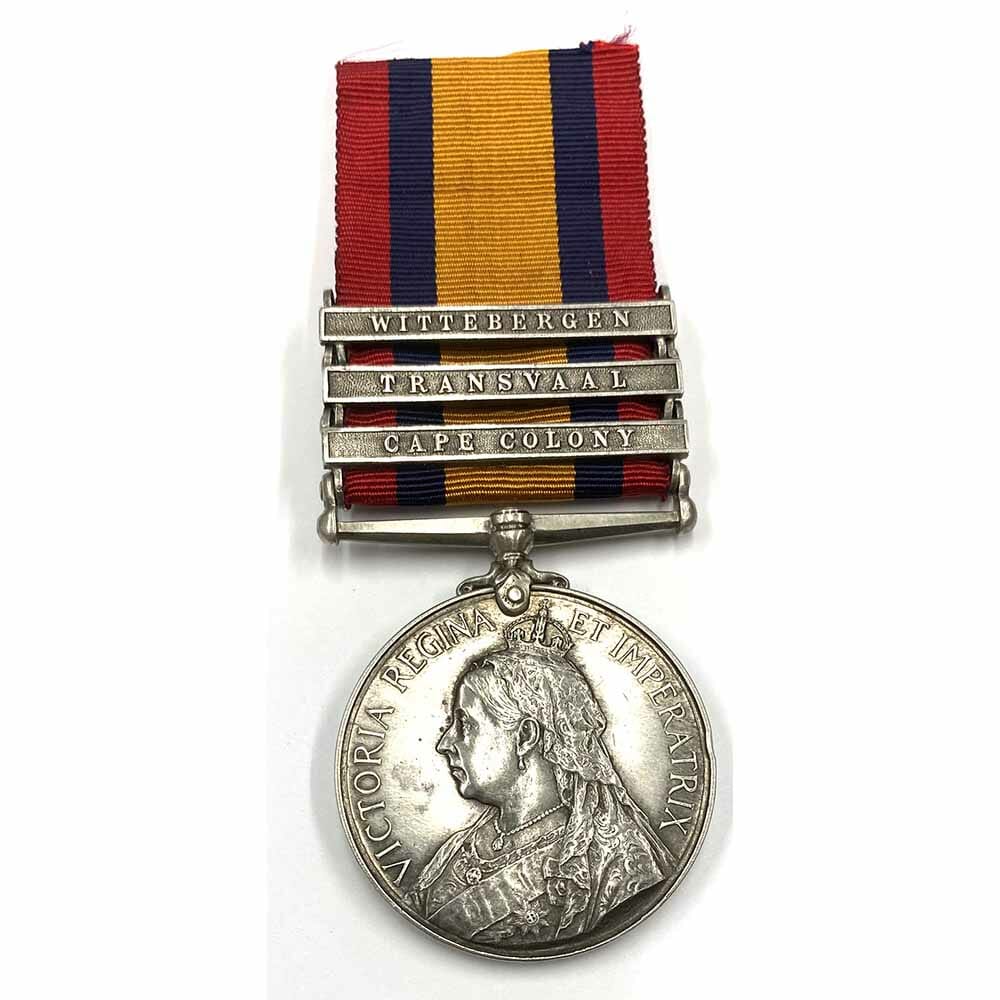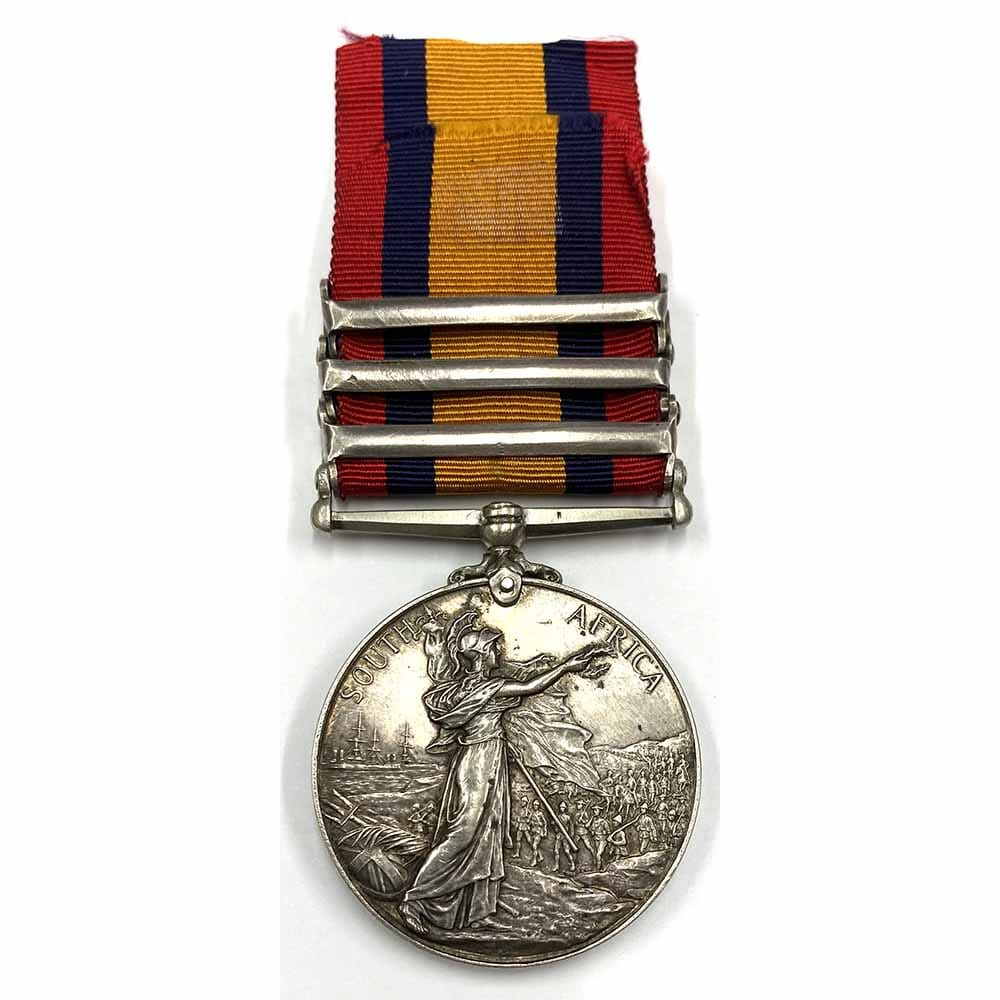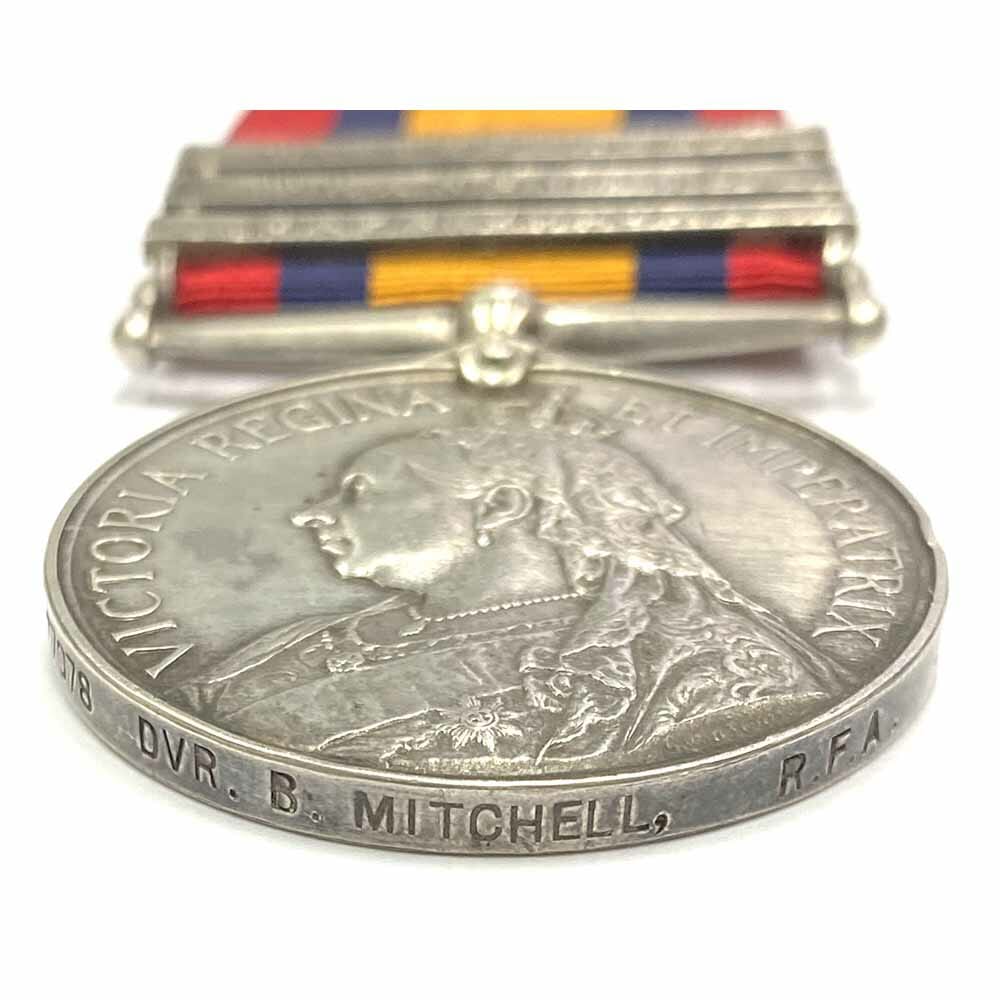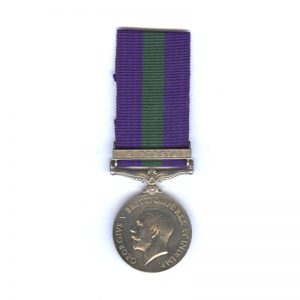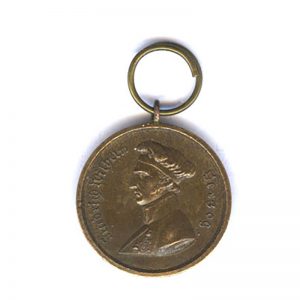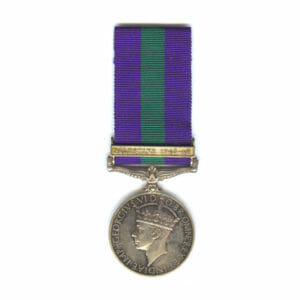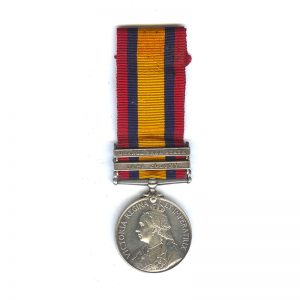Description
Queen’s South Africa, 3 bars, Cape Colony, Transvaal, Wittebergen, 77078 Driver Bertie Mitchell, severely wounded when shot through both legs manning the Pom-Poms at Tweefontein on Christmas Day 1901. He would later die on 4th March 1903 following his discharge.
Officially impressed: “77078 Dvr B. Mitchell, R.F.A.”
During the Boer War, Bertie was serving with the 1 Pounder Maxims (Pom-Pom) Unit of the Royal Field Artillery, who were equipped with QF 1-Pounder Pom-Poms, unlike the conventional artillery of the period, the “Pom-Pom” weapons were deadly “autocannons” capable of rapidly firing explosive ammunition.
Originally during the Boer War, the British Government had rejected the newly minted gun, but then found themselves being bombarded by the South African Republic, who had ordered themselves a few and were being supplied with ammunition from Germany. Naturally this prompted the British to place orders in retaliation and about 50 Guns were shipped out by Vickers-Maxim to arrive in time for the Battle of Paardeberg by February 1900.
He would be engaged at the Battle of Tweefontein, atop Krismiskop/Groenkop in the early hours of 25th December, Christmas Day, 1901.
During the battle he received some severe wounds, having been shot through both of his legs, which certainly would have put him out of action manning his gun.
An excellent full account of the bottle has been assembled from the Book “Monuments and Battlefields” by J L Smail (page 35) and “The Anglo-Boer War: a Chronology” by P. Cloete (Page 287) it reads:
“On 24 December, the Infantry withdrew and the British force on Groenkop mainly consisted of the 11th Battalion, Imperial Yeomanry (34th, 35th, 36th and 53rd Companies) with a Pom-Pom and one gun of the 79th Battery, RFA. The withdrawal of the infantry to Tradouw was observed by the Boer General de Wet from an excellent observation point some 60 m higher than Groenkop. This gave him a birds-eye view of the British camp and enabled him to easily observe all the selected sites of the British pickets.
The night of 24 December was moonlit, but the shadows of passing clouds and a light veil of mist shrouded the march of the Boer force and not long after 1 am on the morning of the 25th the Boers were massed at the north-western foot of Groenkop. Leaving the horses and pom-pom with some 100 men at the foot of the hill, De Wet’s Burghers silently, on stockinged feet, start to climb the hill. At 02:00, after a brief rest just below the summit, De Wet shouts, “Burghers! Storm!”, and they swarm over the crest, overwhelming the sleeping pickets. They take the higher positions and unleash murderous fire on the tented camp. The surprise is complete. Several soldiers are hit in their tents. The horses stampede and about a third of the British soldiers flee down the hill in their night-clothes.
Some officers vainly try to establish some resistance, but within a few minutes it is all over. The burghers, barefoot and dressed in rags, loot with enthusiasm – thoroughly enjoying their Christmas fare. At least 57 British soldiers are killed (the bodies of 25 blacks are later found on the battlefield), 84 are wounded and some 200 soldiers (including the wounded) fall into De Wet’s hands. On the Boer side 14 men are killed and 30 are wounded. Two soldiers of a patrol sent from Rundle’s camp to investigate, are also captured and Rundle’s contribution to the battle is a few shells falling among the wagons as they are removed by the victors. Contrary to their custom, De Wet takes the unwounded prisoners with him to put them across the Basutoland border a few days later.”
His life and other service:
Bertie Mitchell, was born during 1871 in Newent, Gloster, Gloucestershire. At the age of 18 having been working as a Labourer and been a member of the 3rd Battalion Gloster Regiment he attested for full-time service on 24th January 1890 at Woolwich, for the Royal Artillery.
By 1897, he had already finished his 7 years of service and was due 5 more years with the Army Reserve, he joined the 1st Class Army Reserve Section B on 23rd January 1897.
On 7th October 1899, along with all the other Reservists, he was recalled under the Special Army Order to prepare to be posted to South Africa for the upcoming War.
He served during the beginning of the war with the 1st Local Ammunition Column.
Then on 26th January 1901 he was posted to begin his service with the new 1 Pounder Maxim Pom-Pom unit.
He managed following his wounds, to remain on service and was not sent home until the end of the war, when he was discharged as medically unfit for further service on 1st September 1902 due to his wounds.
He was earning his pension when suddenly his papers state he had “Died at Newscatle, some natural cause, probably Heart Disease, 4th March 1903.”
